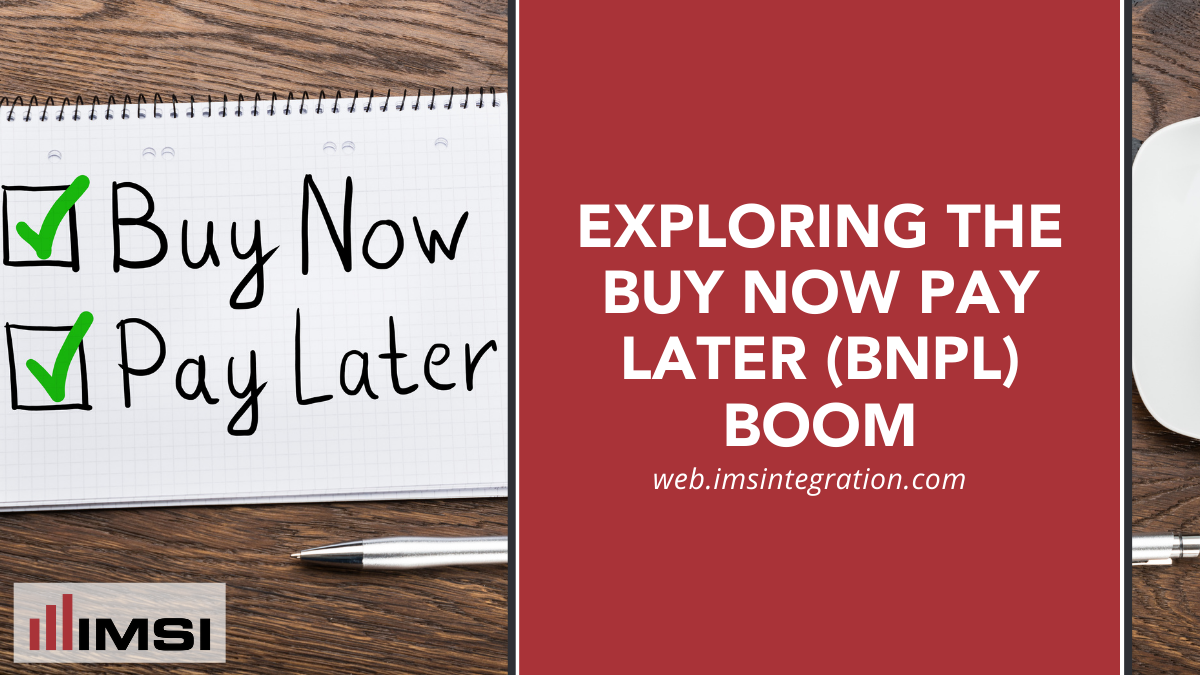We often talk about the differences between older and younger generations, and we can add another trend to the list of factors that divide them: the surge in buy now, pay later program participation among younger Millennials, and Gen Z.
Let’s explore the BNPL boom and its role in the future of banking.
Why is BNPL Gaining Popularity?
As online shopping continues to grow in popularity, more and more we are seeing checkout prices being listed as “$349.99 now, or $29.17 per month for 12 months” or “4 payments of” a much more manageable amount. And younger shoppers are loving it. Buy now pay later is gaining popularity.
The younger members of the Millennial and Gen Z populations are not fans of credit cards, and their buying habits back this up. For example, in 2021, 12% of the 18- to 34-year-olds surveyed said they used BNPL for holiday purchases, compared to 0% of the 65 and older demographic, says CNBC. Overall use of the buy now pay later method was up nearly 30% year over year.
But why is BNPL so attractive to younger shoppers? Because it costs less than using a credit card, they say.
The attractiveness of BNPL comes from the idea that shoppers can create a bit more flexibility in their medium-sized purchases. Purchases that fall in the $100-700 range can be split into a handful of smaller payments that are spread out over the next few months, or even over a year. It eases the burden these occasional purchases bring, without incurring the high interest fees one would be stuck with if they used a traditional credit card.
It can be useful for more than just low-income shoppers, though. BNPL often is being used by those who are financially stable, but who want the predictability of the plan without having to incur costly fees or go through a long or drawn-out loan application process.
And, says CU 2.0, younger generations crave financial stability in a world that has been exceedingly unstable for them, they want solutions that leave no surprises. While a loan amount or balance is always available, banking members don’t know what the actual cost of their purchase will be until they pay off the full amount – and this depends on the frequency of payments (and whether the member pays in variable amounts), initial loan amounts, interest rates, the member’s credit score, and more. And if a member puts that purchase on a credit card but doesn’t pay off the full amount during the next billing cycle, the end expense is, once again, a variable and often a much higher price tag at the end. But with BNPL, the total cost is given upfront, and the timing or amount of the payments made will not change that.
How CUs Can Use BNPL Plans to Their Advantage
Credit unions looking to capture and engage more younger members can implement programs and offerings that follow this ultra-convenient and straightforward buy now pay later idea by using account data history for current members, and by advertising these services in a friendly, quick, digital offering.
More and more businesses have these BNPL plans built into their websites either on product pages on somewhere in the shopping cart or checkout process.
Focusing on smaller, more upfront methods of creating recurring payment plans for your members can help differentiate you as a credit union that is both up-to-date on the current trends and also committed to helping and educating members so they can become more financially sound.
Digital Solutions for Rapidly Evolving Banking Trends
IMS Integration wants your credit union at the forefront of digital transformation. From online account opening to web loan applications and Skip a Pay, our solutions are tailor-made for credit unions, because we know that your CU has unique needs and goals for the new year.
Check out our website for more information, or contact us today if you have questions.



